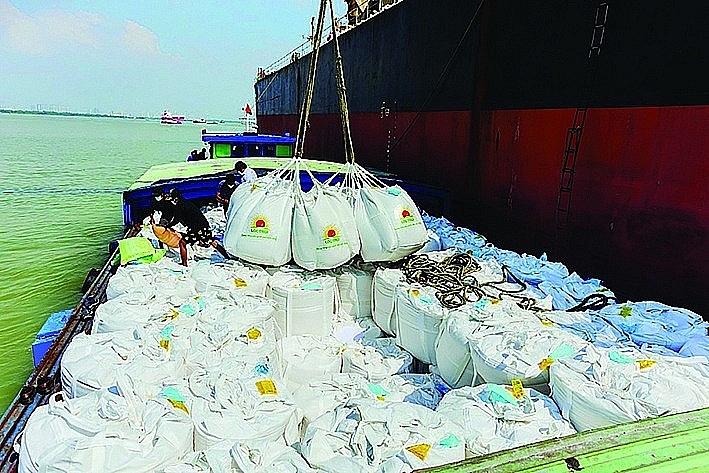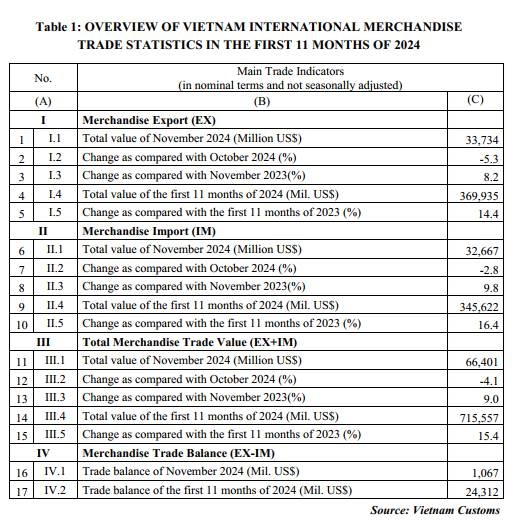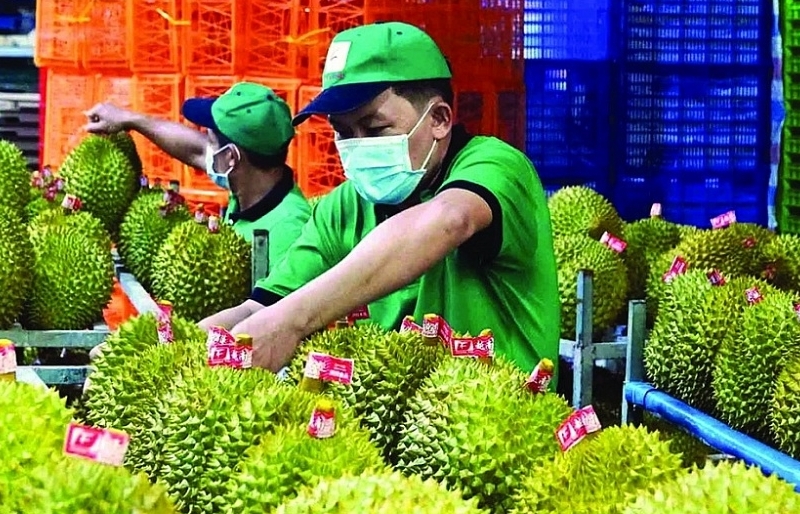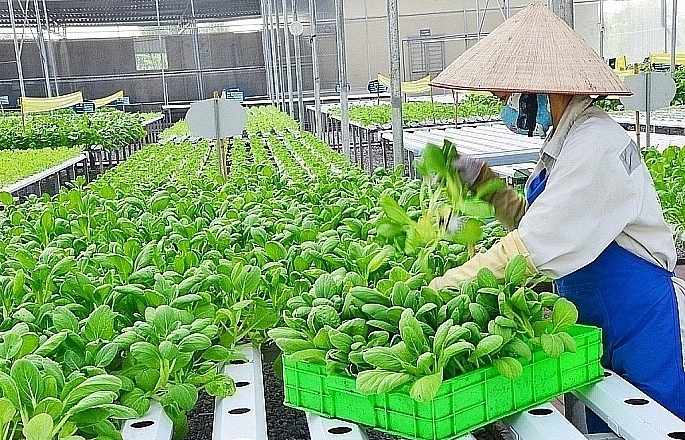Considering long-term strategies for rice exports
| Linking Vietnamese rice exports | |
| Businesses urged to seize opportunities to boost rice exports to Indonesia | |
| Big opportunities for rice exports in 2024 |
 |
| Vietnamese rice presents numerous opportunities to further assert its standing. Photo: TL |
Prioritizing understanding consumer preferences
Analyzing the global rice trade dynamics for 2024, Mr. Vu Ba Phu, Director of the Trade Promotion Department (Ministry of Industry and Trade), believes that this market continues to be affected by several factors, such as export bans by some countries and adverse weather conditions impacting food production in numerous nations, influencing the rice production and export activities of countries.
Representatives from the Vietnam Food Association reported that in 2023, most of the major rice-importing and exporting countries were primarily focused on their national food security issues. Production in some countries was reduced due to hot weather conditions, inflationary pressures on food prices amid an economic recession, a scarcity mindset regarding supply, and escalating geopolitical tensions affecting the foreign exchange market and global supply chains. These were the recorded highlights and also the main factors driving a continuous rise in global rice prices throughout the past year, reaching a peak not seen in 15 years. Despite facing many challenges, 2023 remained a highly successful year for our rice industry, with export volumes exceeding 8.1 million tons, worth $4.6 billion, and an average export price reaching $575 per ton.
Compared to the same period in 2022, there was a 14.4% increase in volume and a 35.3% increase in value, with an average price increase of $88.8 per ton.
The Philippines stands as the largest consumer market for the Vietnamese rice sector. Mr. Phung Van Thanh, Commercial Counselor of Vietnam in the Philippines, projected that Vietnamese rice would continue to hold the number one position in the Philippines, with considerable potential and opportunities still available for our rice exporting businesses to further exploit and expand the market, increasing export turnover.
Although the Philippines is a rice-producing nation, it cannot meet its domestic demand and thus needs to import 3-4 million tons of rice per year. Among these, rice imports from Vietnam account for about 85%, from Thailand about 10%, and the rest from India, Bangladesh, Japan, and Taiwan (China). Since 2019, Vietnam has surpassed Thailand to become the leading rice supplier in this market. Despite Vietnamese rice having numerous advantages in the Philippines, there have been changes as Vietnam has significantly developed fragrant, high-quality rice products recently. With over 50 million people having middle and low incomes, the Philippines demonstrates a substantial demand for moderately quality rice products. Hence, businesses and localities need to consider this aspect to target exports of moderately quality rice in addition to high-quality rice.
“The Philippines in recent years has always been a significant rice export market for Vietnam. Therefore, the Commercial Affairs Office recommends that domestic rice exporting enterprises, besides seizing new opportunities in new markets, should also continuously maintain and ensure Vietnam's number one rice export position in the Philippine market. Currently, Thailand is also seeking to increase its production and export market share in the Philippines and compete with Vietnamese rice,” emphasized Mr. Phung Van Thanh.
Intense competition in key markets
Following the Philippines, Indonesia stands as the second-largest rice-importing country from Vietnam. Mr. Pham The Cuong, Commercial Counselor of Vietnam in Indonesia, mentioned regarding the challenges in 2024, that although Vietnamese rice has carved out a niche in the Indonesian market, however, the policy of self-sufficiency in food security from domestic rice sources and maintaining strict import management policies for rice items will lead to a declining trend in Indonesia's rice import demand in the future.
Moreover, Vietnamese rice faces increasing competition with Thai rice in the high-quality segment, while the brand identity of Vietnamese rice in the Indonesian market is not yet distinctly established. Hence, Mr. Pham The Cuong recommends continuing to improve the quality of exported rice, diversifying rice varieties, and ensuring adherence to pesticide residue regulations. Furthermore, there is a need to focus on promoting products derived from rice as this segment represents a highly potential market.
Rice exporting enterprises should pay more attention to brand-building, strategic promotion about the brand, and Vietnam's premium rice varieties, through employing diverse channels and promotional formats.
Especially, exporting enterprises must always ensure the quality of rice, meeting quarantine standards. Assuring timely delivery and adherence to signed contract agreements are crucial as the number of traders with import licenses from Indonesia is considerably limited. Opportunities to find qualified Indonesian traders for imports are scarce.
In the Chinese market - the third-largest rice-importing partner of Vietnam in 2023, representatives from Vietnam's Trade Office in Beijing (China) highlight fierce competition in this market. Currently, rice products available in the Chinese market are of relatively high quality, alongside export countries paying significant attention to packaging aspects. Notably, the packaging of rice from Thailand and Laos present in the Chinese supermarket system (even in Northern China - a region relatively strict about product quality and packaging requirements) is done very securely, appealingly, and suitable to the tastes of Chinese consumers. Vietnamese rice exporting companies targeting the Chinese market need to heed this aspect.
Related News

Preliminary assessment of Vietnam international merchandise trade performance in the first 11 months of 2024
10:50 | 27/12/2024 Customs Statistics

FTA Index helps measure the effectiveness of FTA implementation
10:51 | 27/12/2024 Import-Export
Latest News

Việt Nam becomes second biggest garment exporter globally
16:36 | 27/12/2024 Import-Export

Vietnam may surpass Bangladesh in garment export: report
16:34 | 27/12/2024 Import-Export

Export tax to increase for 13 construction materials
14:31 | 27/12/2024 Import-Export

Building a brand to elevate Vietnamese rice
10:52 | 27/12/2024 Import-Export
More News

Nghệ An Province anticipates record FDI amidst economic upswing
15:49 | 26/12/2024 Import-Export

Green farming development needs supportive policies to attract investors
15:46 | 26/12/2024 Import-Export

Vietnamese enterprises adapt to green logistics trend
15:43 | 26/12/2024 Import-Export

Paving the way for Vietnamese agricultural products in China
11:08 | 26/12/2024 Import-Export

VN seafood export surpass 2024 goal of $10 billion
14:59 | 25/12/2024 Import-Export

Exporters urged to actively prepare for trade defence investigation risks when exporting to the UK
14:57 | 25/12/2024 Import-Export

Electronic imports exceed $100 billion
14:55 | 25/12/2024 Import-Export

Forestry exports set a record of $17.3 billion
14:49 | 25/12/2024 Import-Export

Hanoi: Maximum support for affiliating production and sustainable consumption of agricultural products
09:43 | 25/12/2024 Import-Export
Your care

Việt Nam becomes second biggest garment exporter globally
16:36 | 27/12/2024 Import-Export

Vietnam may surpass Bangladesh in garment export: report
16:34 | 27/12/2024 Import-Export

Export tax to increase for 13 construction materials
14:31 | 27/12/2024 Import-Export

Building a brand to elevate Vietnamese rice
10:52 | 27/12/2024 Import-Export

FTA Index helps measure the effectiveness of FTA implementation
10:51 | 27/12/2024 Import-Export





